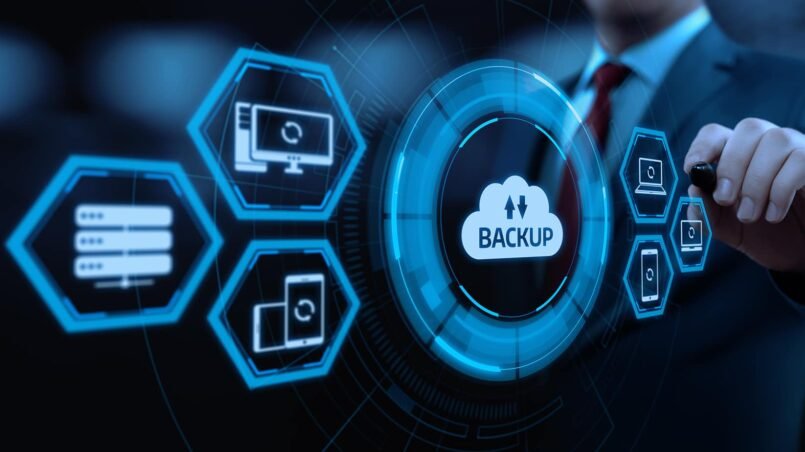In this article, I want to highlight the importance of backup and disaster recovery. Two key aspects need attention: understanding why backups are crucial and what issues they can resolve; as well as learning how to implement them effectively for optimal results.

So, in the observance of Cybersecurity Month, it is crucial to emphasize the importance of understanding cyber threats and how various security strategies can enhance data protection. These strategies include conducting regular training sessions, adopting strong password practices, utilizing multi-factor authentication (MFA), consistently updating software and devices for endpoint protection, implementing intrusion detection systems (IDS) and intrusion prevention systems (IPS), among others.
Why the backup matters
Data consistently poses a primary risk. It can be compromised, made unavailable, or rendered inaccessible through different methods. However, by staying proactive and implementing backup and disaster recovery strategies, we can effectively mitigate these threats.
The frequency of ransomware attacks has risen sharply. Reports indicate that the average ransom in 2024 is $2.73 million, marking a $1 million increase compared to 2023. Hackers demand this payment from victims to unlock encrypted data. While you can usually depend on backup data if your operational information falls victim to encryption by ransomware, there’s an important factor to keep in mind!
Today, ransomware attacks target not only operational data but also backup copies. Consequently, if your backups are also encrypted, it might be impossible to restore them. However, you can safeguard yourself by utilizing a backup solution like Cybershield with immutable backups technology. This feature ensures that ransomware cannot modify your backup copies of your data.
Have you ever encountered a situation where important data was accidentally deleted by yourself, someone else, or a coworker? Despite having over 15 years of experience, I have been in such situations. It only takes a brief lapse in attention to make this kind of mistake. Instead of formatting my USB flash drive, I mistakenly formatted my secondary disk that held more than 10 years’ worth of photos and videos. Thankfully, I had backed up everything on my Synology NAS. Human errors can happen at any moment; however, being proactive with backups is essential for preventing data loss.
When you depend heavily on your data, it may become corrupted and inaccessible. Have you ever tried to copy or move data from one place to another, only to discover that it’s not accessible? This is usually due to a network transmission error. Data corruption can happen during the processes of reading, writing, storing, or transmitting information.
Data corruption can result from a variety of causes, such as hardware failure due to faulty components, power outages, software bugs, file system errors, different kinds of malware attacks, bad sectors on hard drives (HDD), improper machine shutdowns or unstable system configurations. If data becomes corrupted, your sole recourse is to rely on undamaged backup copies for recovery.
Data loss frequently results from hardware failure, and different storage systems can encounter a range of issues. Disks may fail due to mechanical breakdowns (in HDDs), power surges or outages, overheating, bad sectors, physical damage, manufacturing defects, among other reasons. Firmware corruption also poses a risk—always back up your data before attempting any firmware updates on your disk.
Storage systems are not immune to failure, which can lead to data inaccessibility. To mitigate this risk, it’s essential to implement clustered storage solutions that ensure high availability of data. However, onsite issues may still render data inaccessible. Consequently, maintaining an offsite backup at a different on-premises location or in the cloud is advisable as part of a robust strategy. With an effective backup plan in place, our data remains accessible under any circumstances.
Backing up data is essential for business operations to meet regulatory standards. This involves setting up secure and encrypted backups. While maintaining a regular backup timetable, ensuring offsite storage for disaster recovery in line with the 3-2-1 backup rule, and thoroughly documenting the entire process. These practices are specified by regulations such as ISO 27001, GDPR, SOC2 among others. Vendors handling customer data will typically need to comply with these requirements.
Things to consider when implementing backup
Minimizing the risk of data loss involves not only implementing backups but also ensuring proper configuration and following best practices.
A crucial step is to have IT teams trained in managing backups and configuring products following best practices. The most effective way to achieve this is by participating in vendor training sessions. Nonetheless, there are universal common-sense procedures that apply to any backup provider.
In addition, users need training on data handling procedures, including instructions on proper storage locations and guidelines for sharing information. They should also have clearly defined permissions regarding their actions with the data.
Another important consideration is to implement and adhere to the 3-2-1 backup strategy. This rule recommends keeping three versions of your data: one original and two backups. The latter should be stored in multiple locations, ensuring that at least one copy is kept offsite on a cloud platform. I have written an entire blog post dedicated to this subject.
Automating backups is essential to remove the necessity for manual involvement. By adhering to a set schedule that specifies when and where data needs backing up, the process will run independently. Once each backup task is finished, our system can send notifications to indicate whether it was successful or not.
A frequent error is setting up a backup and assuming everything is secure just because it exists. In this scenario, many companies have faced difficulties after realizing their backups were corrupted when attempting to restore them due to problems. I cannot stress enough the importance of verifying and testing backup copies regularly.
Are you familiar with the story of Toy Story? While Pixar was developing Toy Story 2, a technician accidentally deleted crucial files from the main disk during maintenance and cleanup. This error led to the loss of 90% of the movie’s data. When they attempted to restore the files from backups, a new issue arose. The backup copies were corrupted; their integrity had not been verified at the appropriate time. As a result, it took an extra two months to reconstruct those film files.
Today’s compliance and regulatory obligations define best practices for fulfilling legal requirements. These standards are more than mere formalities; they safeguard companies and their data. This involves setting up the methods, timetable, and sites for data storage while guaranteeing that backups are encrypted and validated.
Elevate Your Data Security with cybershield
An old saying goes that you don’t recognize the necessity of a backup until you’ve lost your data. Let’s prevent such scenarios by ensuring organizations of every size have dependable backup solutions in place. These backups should come with advanced features and address all aspects discussed in this article. Effective data protection must encompass not only hypervisors but also hosted virtual machines, endpoint devices, Microsoft 365 services, SaaS applications, Active Directory functions, Microsoft Exchange servers, various databases, and more—essentially covering all operational data comprehensively.
Cybershield, the leading product from Vembu, can achieve all this and even more. It provides backup solutions for both onsite and offsite locations and seamlessly integrates with Azure, AWS, and S3-compatible public storage services. In case of any issues, you have the ability to perform an instant boot, verify backups easily, access a range of reporting options, as well as receive notifications regarding your backup processes.
summary
October marks Cyber Security Awareness Month, providing a great opportunity to highlight the critical need for backup and disaster recovery solutions. Data can become inaccessible due to numerous factors such as ransomware attacks, human errors, hardware failures, or data corruption. Any of those can compromise your access to vital information.
To effectively manage these risks, we should implement a proactive strategy that includes closely monitoring the storage system and disk health, along with consistently maintaining regular backups. However, merely having backups in place is insufficient. Focusing on critical factors such as training IT teams and end users, implementing a 3-2-1 backup strategy, and guaranteeing that backups are automated and regularly verified is essential. Furthermore, adhering to best practices and meeting regulatory obligations is essential.


